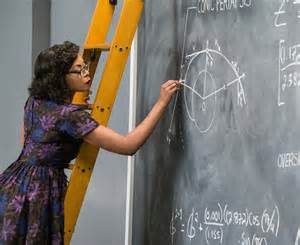Hollywood gets panned and pounded for the occasional liberties it takes with historical events.
But consider this for a moment.
Today is the 55th anniversary of a space flight in which the late John Glenn, a young Marine Corps test pilot, orbited the Earth three times. It would be the first of his two flights into space; the second one occurred in 1998, when Sen. Glenn was 77 years of age.
But get this: February also is Black History Month and Hollywood has managed to merge an important aspect of Glenn’s first flight with another. Glenn owed his flight’s success to the genius of a group of African-American women who relatively few Americans knew about until the release of the acclaimed film “Hidden Figures.”
Think of it. Glenn’s historic flight now can be celebrated as a key event to salute African-Americans. What’s more, that it occurred on Feb. 20, 1962 puts it in the middle of the month we set aside to commemorate the contributions of black Americans to the development of this great nation.
“Hidden Figures” tells the story of three young African-American women — two mathameticians and an engineer — who, with their team of fellow geniuses, worked with NASA to calculate the math associated with space flight.
The contributions of these women were kept under wraps at the time. It was the early 1960s and America was in the throes of the civil-rights movement. The country was unable — or unwilling — to accept the contributions these women gave to this great adventure known as the “space race.”
The film has put an entirely different spin on the “race” aspect of the competition between the United States and the Soviet Union.
I am one who is thrilled to meld these two events — Black History Month and the flight of our first space orbital mission — into one.
Well done, Hollywood.

Ken Levine, a veteran comedy writer (baseball announcer, radio announcer) who writes a blog about comedy writing, reviewed Hidden Figures:
http://kenlevine.blogspot.com/2017/01/hidden-figures-my-review.html
His thesis statement:
it’s the true(ish) story of three African-American women in the early ‘60s who worked for NASA and were key players in getting our astronauts up into space and more importantly, back down again safely… a stirring celebration of intelligence and science
Hidden Figures had more than its share of Hollywood moments but I was disarmed by the against-the-odds stories of the uber-competent women. Many times I was so proud of them even while suspecting the dramatic license exercised.
This article addresses some of the implausibility’s that occurred to me while I watched:
http://www.historyvshollywood.com/reelfaces/hidden-figures/
An early scene that was not implausible to me portrayed a young Katherine Johnson (trajectory calculator) demonstrating a math problem on the board to all the older kids. She was portrayed as one of those 1-in-10,000 that grasps math as essentially a natural language. A good math teacher would realize the gem that plopped into his lap. He’ll understand that conducting his class for the ordinarily intelligent will leave the superstar bored to tears. He will give her the math book, tell to work through it, and when she’s done give her the next one.
The book by the same title – published after the film wrapped – is on it’s way to my mailbox.
Just so you know, I asked a math professor friend who had seen the film if Katherine’s blackboard formula meant anything. Her answer? Yes. It did.
I suspect there are math nerds who took photos of the many blackboard shots in that film – for later “dissection”.
(and others who will do the same when the DVD’s come out)
Actually, the 9th grade algebra demo was one of the few realistic blackboard scenes. Although they make for some visually-impressive scenes, those trajectory problems can’t feasibly be solved using chalk. Ms. Johnson alluded to this when she mentioned “numerical methods” – which involves many iterative approximate calculations – perfect for the mainframe computer that proved too large for the doorway.
(BTW a reciprocating saw is the practical way to enlarge a doorway – though not nearly so dramatic as that twice-used sledge. NASA-nerds and IBM-ers may smile indulgently at the film-writers conceit that their predecessors were so impractical)
I always wonder that film budgets in the tens-of-millions can not find rigorous technical assistance to excise the technical mistakes.
As an easy-to-fix mistake – the set of equations that relate constant velocity and constant acceleration to postion and time (and velocity in the latter case) that were on a blackboard in an early scene.
These are so fundamental that everyone in the room knew them when they were still virgins.